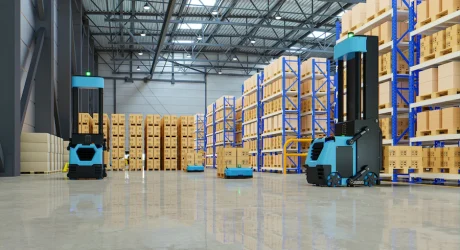Artificial intelligence is just beginning to penetrate medicine. Many computer algorithms and promising inventions have already appeared in this field, but so far they are quite far from reality and are waiting for proof of their clinical effectiveness.
However, given how rapidly this field has been developing in the last few years—and given the fact that machines are already surpassing people in solving specific medical problems—the number will grow rapidly.
It should also be recognized that narrowly focused artificial intelligence will firmly take its place. Hundreds of companies are investing in the development of artificial intelligence technologies for medicine today, but first of all, such technologies should get rid of routine–they should not be considered a replacement for a doctor.
Let’s see what AI technologies are capable of.
Development and Application of Medicines
In the process of creating new medicines, artificial intelligence first of all has made it possible to speed up work with big data. In order to select from a decillion molecules, several useful ones can be used to create drugs.
Systems based on machine learning algorithms analyze databases of existing molecules and their properties, offering new combinations. The main role of AI at this stage is to predict the interaction between the molecules of the future drug and the proteins of human cells. Accelerating the search for candidate molecules dramatically reduces the cost of developing new drugs.
In addition, AI can be used to study and understand the mechanisms of the disease and search for biomarkers.

Medical Images and Diagnostics
Problems with the accuracy of a diagnosis are found even in the most common diseases, not to mention rare diseases—so any help from doctors is invaluable. Computer vision, combined with machine learning technologies, makes it possible to analyze all medical images faster, automatically identifying areas with all possible pathologies and focusing the doctor’s attention on them.
Thus, the number of errors and the time for diagnosis, which can be critical, is reduced and the cost of the examination is reduced.
Predictive Analytics and Risk Analysis
Today, it’s becoming popular to return attention to the prevention of diseases, predictive analytics is a very promising area. Among the tasks for AI in healthcare, which can have a significant effect is an operational analysis of changes in the level of morbidity, prediction of patients’ appeals to medical organizations, and the need for medicines.
The most “breakthrough” technology promises to be a digital avatar–a copy of a physical object that performs the functions of the original. Telemetric data about anatomy, physiology, and genome coming from sensors installed on or inside the human body are accumulated and converted into an up-to-date digital model, constantly updated to approximate the original. With the help of AI, the double can be controlled and shown how the object will behave in the future.

Lifestyle Management and Monitoring
The technology of analyzing the contents of digital traces left by a person (behavior in social networks, use of services of state institutions, pharmacies, etc.) is very promising for obtaining sociological, demographic, and marketing information about the quality of the healthcare system and individual medical institutions.
Chatbots can increase patients’ commitment to a healthy lifestyle and the fulfillment of doctor’s appointments. They are able to answer routine questions, suggest tactics of behavior to the patients in specific typical situations, connect them with the right specialist for consultation, give recommendations on diet, etc.
Stimulating patients’ self-service and their involvement in taking care of their own health reduces the burden on doctors and saves the resources of the healthcare system.
Processing and Analysis of Data from Wearable Devices
Gadgets that allow you to track temperature, blood pressure, heart rate, blood sugar, sleep phases, etc., reveal only a small part of their potential–tools are required for the intelligent analysis of the generated information.
Data collection from medical sensors and their processing by machine learning methods in a streaming mode can help prevent serious diseases and postoperative complications and develop individual rehabilitation programs, contributing to the widespread dissemination of a personalized approach to the patient.

Virtual Assistants
Speech recognition and speech analysis systems in natural language can significantly help both doctors and patients: voice assistants are able to enter the doctor’s recommendations dictated during the patient’s examination into the medical record and schedule the date of the next visit in the calendar.
Robots can remind patients about the appointment with the doctor, which will reduce the number of empty slots in the schedule and optimize the workload of specialists. Chatbots can collect a preliminary medical history, saving the doctor’s time at a face-to-face appointment.
The registration robots in the polyclinic or the hospital’s reception department can answer patients’ questions and help plan their routes around the medical institution.
Emergency Care and Surgery
In this area, it is especially dangerous to violate the principle of “to do no harm”, nevertheless, interesting AI solutions are offered here. In one of the London University clinics, similar systems are used to identify 20% of those who really need emergency medical care among patients in the emergency room.
The app sets priorities by assessing the danger of symptoms. For example, abdominal pain can mean appendicitis, and a person with such a symptom will be moved up faster to the front of the line.
Excessive attention around AI harms the development of relevant technologies, generating inflated expectations of society, such as belief in a “magic wand”. Artificial intelligence should not be considered a substitute for a doctor. First of all, such technologies should get rid of routine, and not add work to the doctors, they are designed to free up their time to communicate with patients and colleagues.
Applied tools that solve real problems “here and now” are more likely to take root in the medical environment, which, due to the basic principle of “do no harm”, is more conservative and perceives innovations much more cautiously.
The introduction of modern artificial intelligence technologies is impossible through the efforts of enthusiastic scientists and startups alone: joint efforts of the authorities, commercial organizations, and medical institutions are necessary. For sure, artificial intelligence in medicine is the future that has already come.

Additionals:




























